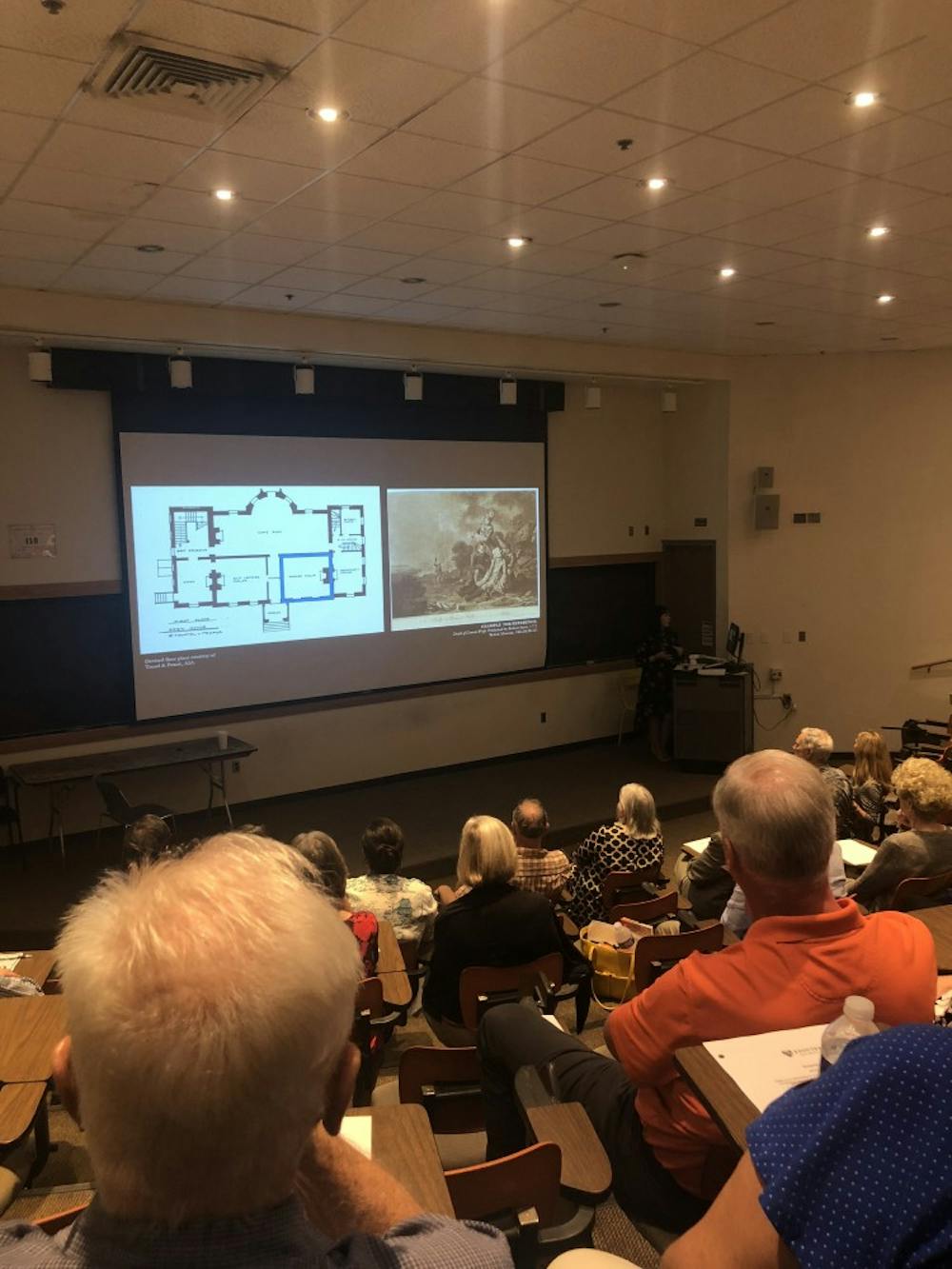Michelle Fitzgerald, an intern at the Americana Foundation Curatorial at the Colonial Williamsburg Foundation, gave a talk about her reconstruction of Sir Robert Eden’s townhouse on Monday, Oct. 1. This talk was part of an architectural series held in conjunction with Homewood Museums at the Homewood Campus.
Sir Robert Eden was the last colonial governor of Maryland who left his townhouse, the Eden-Jennings house, during the Revolutionary War. Because he was loyal to the British, his land was confiscated by the State of Maryland in 1781.
Fitzgerald explored reasons why the house is still important, as well as how the house would have looked during the 1700s.
“Eden’s residence was furnished with its significance as an informal space of governance in mind,” she said. “He sought to remind visitors of his power and the political lineage of colonies.”
She began her lecture by giving background on Eden’s life and his history in America. Eden, who was from Durham, England, was appointed governor of Maryland by his wife’s father, Charles Calvert, in 1769 at the age of 27. Fitzgerald highlighted the ways in which his immense spending damaged his relationship with his wife Caroline Calvert.
“Eden had spent nearly everything for the sake of furnishing his mansion in Annapolis,” she said. “His financial actions strained the family both financially and emotionally for the next two generations.”
Fitzgerald delved into the importance of the house and its materials to Eden to explain why he went broke attempting to furnish it.
She detailed that Eden used this estate to convey a sense of importance and political power.
“Eden sought to make himself popular among colonial elites. His desire to be accepted by the colonial elites motivated his selection of furnishings. This tactic began even prior to his arrival in Annapolis and continued throughout his visit. It is power and identity that is manifested in his furnishings,” she said.
Annapolis at the time, she explained, was a very fashionable, urban city. Eden felt the need to match the city’s style through the presentation of his home.
She also stressed the importance behind Eden’s connection to the Calvert family. Calvert promised his son-in-law the proprietorship of Maryland upon his death, and so Fitzgerald said that Eden felt the need to construct a house fit for not just a governor, but the owner of a colony. Fitzgerald emphasized this when discussing the portraits hung in the house.
“As Eden’s brother-in-law, the portrait is a further reminder of the governor’s ties to the Calvert family, never forgetting their proprietary right to the colony,” Fitzgerald said.
She used a combination of Eden family letters, papers and court documents to piece together the status of his mansion. Ironically, she pointed to the documents related to the confiscation of the house due to Eden’s loyalist status as particularly helpful.
“The confiscation resulted in the lost of physical objects, but it gave us something in return: inventories,” she said.
Fitzgerald explained that a secretary had likely detailed Eden’s house, then the state of Maryland had taken a second inventory of the house. In 1789 — five years after Eden’s death — the state took a third inventory of the house while settling debt claims.
This allowed for Fitzgerald to notice a pattern of what was in the estate, which helped her to sketch where objects in the mansion originally came from. An affidavit regarding his debts gave her an excerpt of his account during the period he was furnishing his mansion.
“If anyone tells you archival research isn’t physically demanding, they are wrong,” Fitzgerald added.
Attendees commented on how much they enjoyed Fitzgerald’s description of her search for information. Susan Brooks, a docent at Evergreen Museum and Library, highlighted this as one of her favorite parts of the event.
“What she especially emphasized was the searching for the history, delving into the archives and pieces,” Brooks said.
Elisabeth Mallin, a curator with the Maryland Historical Society, cited the fullness of the narrative as what she enjoyed most about the lecture.
“She really told the story from beginning to end, and it felt she filled in all of the details, which was really great,” Mallin said.
Rachel Lovett, a curator with Hammond-Harwood House who will be giving the next lecture in this architectural series, particularly enjoyed the descriptions of Eden’s residence.
“It just sounded so ostentatious, so beautiful,” Lovett said.
Fitzgerald concluded her lecture with a final note about the prevalence of materials in her research and in understanding who Robert Eden was, and how documents were able to put together the past despite the house itself being gone.
“Eden is always going to be remembered by his objects,” she said.





